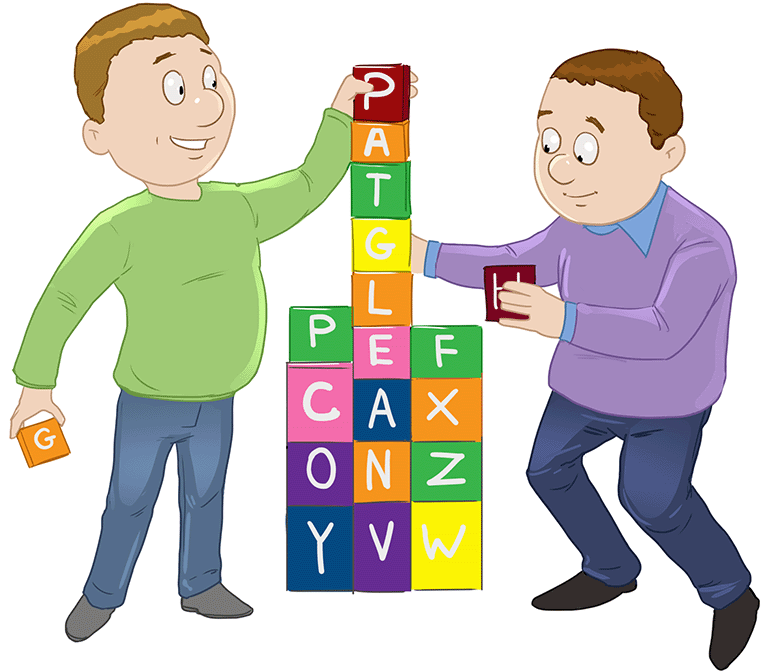Language planning and created languages
"How to make your own language"
"How to make your own language"
It is human nature to try and improve things, be it for better or worse. Politically, technically, even biologically, inviting both beauty and disaster. One of homo politicus' favourite areas of tampering has been language. Language provides different windows on reality and is a primary vehicle of social identity. It is a power tool and a tool of power. Therefore politicians, linguists, philosophers and writers have always tried to dictate language change rather than let it run free, to suppress one language and further another, to regulate spelling or introduce new euphemistic terms for negative concepts. With the advent of the nation state in Europe in the 19th and 20th century, national languages were favoured at the expense of minority languages, and sometimes purged of foreign words.
Thus Hungarian replaced German and Latin words with indigenous ones, the Académie Française battles to keep English loan words at bay (to no great avail), and for a long time Iceland forced immigrants to change their name into a germanically derivable one because of Icelandic's system of patronyms. Obviously, literature (or the absence of it) has a great influence on the fate of a language, and a lively literature can help to define, change or stabilize a language, as the example of 19th century Slovak shows, where three versions of a literary language competed on the road to nationhood, with one of them finally giving rise to the modern Slovak language.

And it's not only about words, meanings and endless German spelling reforms - even languages as a whole are subject to planning, often with a political or ideological agenda. Thus, modern Hebrew was built from an ancient literary language together with the Jewish state, rather than letting for instance Yiddish take its course, and the New Norwegian (Nynorsk) project was a prime vehicle of Norwegian independence from Denmark, creating a new language norm from countryside dialects rather than letting the Danified language in the capital of Christiania (Oslo) run its course.
A special scenario of language planning and creation is cross-cultural communication (Interlinguistics). While pidgins and creoles rose by themselves in the wake of post-Columbian European trading, slaving and settling, some languages were specifically standardized, simplified or created to support cross-cultural communication. Examples of standardization of such auxiliary languages (auxlangs) are modern day Suahili in Eastern Africa or the Jesuits' Lingua Geral in colonial Brazil, which was built from indigenous Tupi and used widely in mixed families and for trade in the Amazonian backwaters. Planned simplification can be seen in projects like Basic English, Interlingua or Latino sine flexione, and professional jargons are often simplified in grammar, while rich in terms (e.g. aviation English). Complete languages created on the basis of existing human languages are called a posteriori languages, while languages constructed on the basis of philosophical systems, logic, symbols, sound etc. are called a priori. The same violent centuries that suffered under the whim and whip of nationalist language planning and cultural minority supression, also saw the advent of a counter-movement, aiming at the creation of culturally including a posteriori languages with a humanist agenda. The most successful of these projects, Esperanto, was launched in 1887 and draws its words and sound system from existing, mainly Romance languages, while using a completely regular grammar and a vocabulary-boosting system of affixes. Notwithstanding its regularity and its focus on cross-cultural communication, Esperanto has since grown into a normal language in the sense that it has native speakers and poets, and acquires new terms just like any other language, through loans or creative usage by its speech community, reducing the influence of further language planning, with an academy just as powerless as the Académie Française. In this sense, Esperanto is less of a planned language today than, for instance, New Norwegian, which requires constant cleansing to safeguard its identity.
There are only few known examples of truly independent a priori languages, but some of those are very colourful examples of how inventive, playful and creative the human mind can be. Solresol, for instance, is based on musical note syllables, and could be sung, whistled or represented by colors or finger signs. Unlike the shepherds' whistling language in the Canary islands, Solresol has a consciously planned vocabulary.

People also invent languages for specific purposes only, one of them being secrecy rather than understanding. Most of those will be coded versions of existing languages, like Astrid Lindgren's "robber's language", but may also be a priori, like Hildegard von Bingen's mystical "Lingua Ignota", which used a Latin grammar with invented words and letters. Some artists have gone to great lengths to enrich their artistic universe with so-called artlangs, famous examples being Tolkien's Elfin and Goblin languages, alien Klingon in the Star Trek universe or more recent "film languages" like Na'vi (Avatar) and Dothraki (Game of Thrones). While all of the above still "look" and function much like ordinary languages, there are also languages that have been engineered on purely philosophical or logical grounds, aiming to comprehensively categorize concepts. Examples are Leibnitz' philosophical system in the 17th century or the modern Loglan and Lojban logical languages.
Finally the kaleidoscope of language planning contains the field of terminology, where scientists such as chemists, biologists, geologists or sociologists strive to wrench words free of the whims of everyday ambiguity and language change, and define their meaning unambiguously and once and for all. In some fields terminology is complemented by a kind of scientific or professional grammar. A very regular example of the latter is the compounding of chemical terms (cf. "longest word" in many languages), while a more natural-linguistic example is medical Latin that allows and standardizes longer expressions or even complete sentences. Inspired by such terminological work and the 19th century encyclopaedic movement, linguists have also tried to build linguistic ontologies and so called wordnets that do not define terms, but still strive to classify and link words (e.g. WordNet).